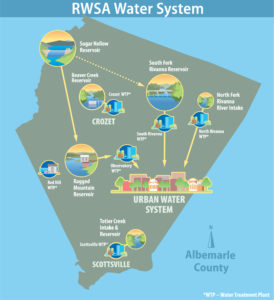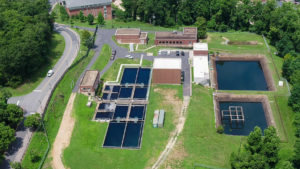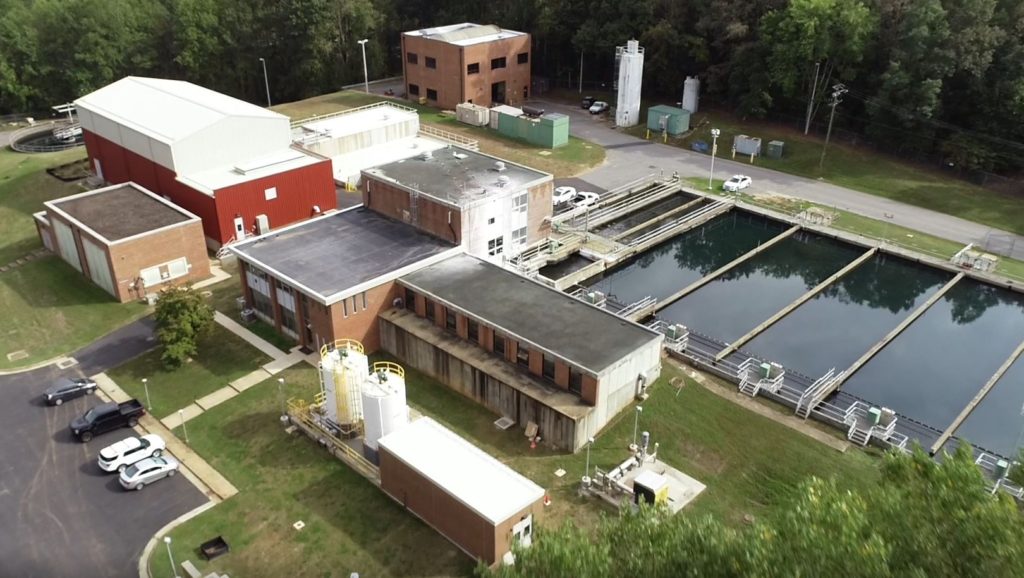
South Rivanna Water Treatment Plant
Water is essential for life. We need water to brush teeth, make coffee, fight fires, and even build bridges. From agriculture to manufacturing, without water we simply would not survive and our economy would grind to a halt.
Rivanna takes immense pride in providing clean, safe drinking water for Charlottesville and Albemarle County citizens. Our dedicated, licensed water treatment professionals work around the clock to provide adequate quantities of superior quality water.
Rivanna collects water from nature’s source for our community water supply at five locations. We have 3.3 billion gallons of raw water which resides in our reservoirs and our total finished water storage is 10.2 million gallons.
Before reaching your tap, sediment, bacteria, and other impurities must be removed. Water flows into our treatment plants and undergoes a multi-step treatment process.
Water Quality
Over 1,900 samples are taken yearly to ensure the quality of water we deliver to ACSA and the City complies with all federal and state guidelines.
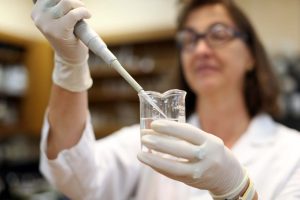
Chemist Conducting Labwork
Water Sampling and Analysis
Our three full-time laboratory specialists complete over 7,700 of lab tests annually to ensure that your drinking water meets all federal and state regulations. We also test the wastewater to assist operational staff in maintaining daily treatment process balance and to ensure that the final effluent meets and exceeds federal and state standards. Lab technicians count and identify algae populations in the reservoirs to help prevent harmful blooms, and analyze water and wastewater for coliform and E. coli bacteria, nutrients (nitrogen and phosphorous), metals, oxygen demand and solids. A typical day might consist of running a nutrient analysis and preparing reagents for use in both the main lab and the many treatment plant satellite labs. We also serve as the laboratory for the Albemarle County Service Authority (ACSA) and the City of Charlottesville Utilities department for their lab needs.
Reservoirs
The Rivanna Water & Sewer Authority owns and operates five drinking water reservoirs. Combined, these reservoirs provide the Charlotesville/Albemarle area with 3.4 billion gallons in water storage. They are:
- Ragged Mountain Reservoir
- Sugar Hollow Reservoir
- South Fork Reservoir
- Beaver Creek
- Totier Creek
For more information about each reservoir, please visit our Reservoir page.
Visit the Reservoirs & Recreation page for information regarding hiking and boating on our reservoirs.
To find out more about our reservoir water quality and management study visit our Reservoir Study page.
Water Treatment Plants
We operate five drinking water treatment plants with a combined nominal capacity of 19 million gallons per day (MGD).
- Crozet Water Treatment Plant
- North Rivanna Water Treatment Plant
- Observatory Water Treatment Plant
- Scottsville Water Treatment Plant
- South Rivanna Water Treatment Plant
- Red Hill Water System
The effective maximum day operating capacity, taking into account operating goals and system constraints, is 18.7 MGD. The safe yield of our water supply is currently estimated at 19 MGD. Through our five treated water pump stations and 67 miles of water transmission pipes water flows to the City of Charlottesville and/or the Albemarle County Service Authority’s municipal water distribution systems.
Water Treatment Process
Water Sources
Raw water from our reservoirs and rivers is pumped into the water treatment plants.
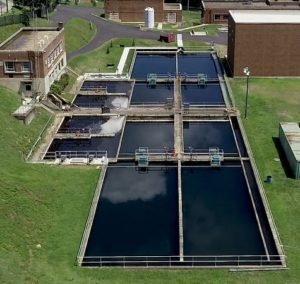
Sedimentation Basins at Observatory Water Treatment Plant
Coagulation/Flocculation
Once it arrives at the plant, the water is treated with coagulant, the pH is adjusted and water is rapidly mixed together to help disperse the coagulant. After the rapid mixing process, the water flows into flocculation basins, where the flow of water is slowed and slowly mixed so that the particulates stick together to form bigger particles called floc.
Sedimentation
Next, the water flows into sedimentation basins, where the heavy floc particles sink to the bottom and are removed.
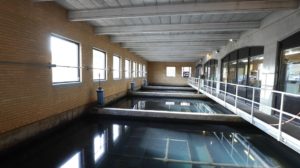
Filters at Observatory Water Treatment Plant
Filtration
The water flows through large filters made of sand and anthracite coal. Filtration removes particles and microorganisms.
Adsorption
All of our treatment plants use Granular Activated Carbon (GAC) adsorption filters, a gold standard when it comes to water treatment to further increase our water quality.
Disinfection
We use chlorine to disinfect the water, and a residual level of chlorine is maintained throughout the distribution system as a protective barrier against microbial contamination.
Final Treatment
After chlorine disinfection, the pH of the water is adjusted and a corrosion inhibitor is added to minimize corrosion of the distribution system piping, and a low level of fluoride (0.7 mg/L, or ppm) is added to support good dental health.
Our Water Operators
Rivanna is dedicated to providing reliable, clean, safe drinking water for our community, now and in the future.
But before it gets to your house, it takes highly skilled, trained, and licensed professionals working around the clock to ensure things like consistent pressure, high-quality taste, and reliability.
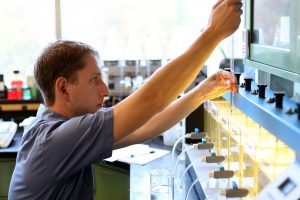
Water Operator Checking pH Levels
A typical day for one of our licensed water operators includes checking the weather forecast and conditions, monitoring water quality and other instrument readings, onsite inspections, and continual adjustments of the water treatment processes. We use a variety of on-line instruments that take continual readings, and we continually verify those measurements with bench top instruments. We also walk the plant to visually inspect the various treatment processes going on. It’s very important. A large weather event like a tropical storm can create sediment-filled source water, which means that water treatment can be more challenging. It’s our job to keep the water running.
Additional Resources
- Community Water Supply Plan
- City of Charlottesville Water Quality
- Albemarle County Water Quality
- US EPA Safe Drinking Water Act (SDWA)
- EPA Safe Drinking Water Hotline is 1-800-426-4791 or visit the EPA’s website
- RWSA, ACSA, and the City Department of Utilities Joint Statement on Lead in Drinking Water
- What You Need to Know About PFAS


